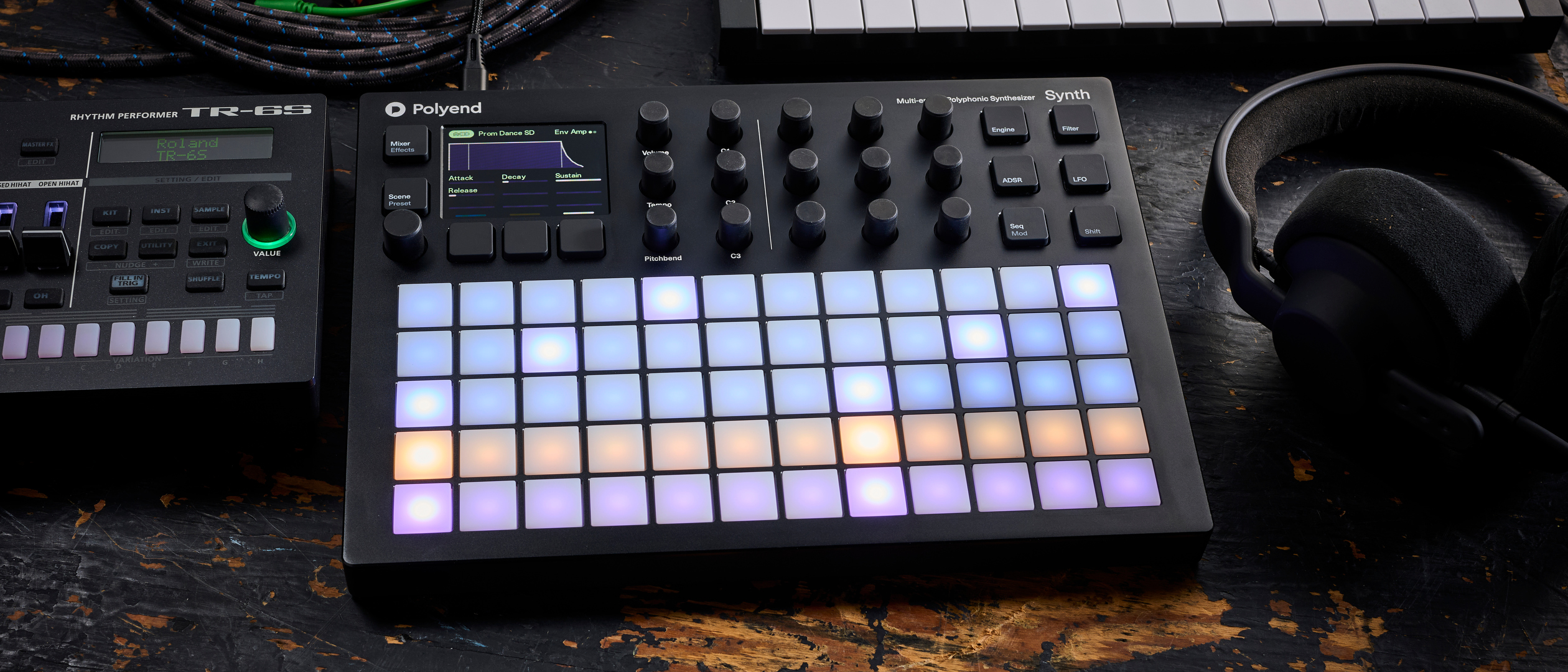MusicRadar Verdict
Synth balances varied synthesis engines with smart, thoughtful interface design to create an inspiring, winning instrument.
Pros
- +
Broad range of synth engines can do virtual analogue, digital and sampled synth tones simultaneously.
- +
Innovative playing grid with poly aftertouch and useful chord, scale and arpeggiator tools.
- +
Can be used as a controller for three synths simultaneously.
Cons
- -
No way to output the three layers on individual channels.
- -
Can be a little too easy to overload the CPU.
MusicRadar's got your back
Synth is the simplistically-named new instrument from Polyend, the Polish developer best known for its Tracker and Play grooveboxes. In some ways, Synth is a continuation of that same instrument line, housed in a chassis the same size and shape as those two grooveboxes and featuring some of the same sounds found in the more recent Tracker+ and Play+ variations.
Unlike those grooveboxes, however, Polyend tells us that Synth is an instrument designed to be played live, with less of a focus on sequencing and more emphasis on playability. To that end, it sports a pad grid capable of polyphonic aftertouch and equipped with innovative scale and chord functionality.
Polyend Synth: What is it?
Synth is, shockingly enough, a synthesizer. More specifically, it’s an 8-voice digital synthesizer that lets users layer and perform with three independent synth engines. Each of these layers can be loaded with one of eight different engine types, each of which is designed to have its own unique palette of sounds.
Four of these are lifted directly from Tracker+ and Play+. ACD, FAT and VAP, are three different flavours of virtual analogue synthesis. ACD takes its inspiration from Roland’s SH-101, with a single oscillator that combines saw and square waves along with a sub oscillator. It also features three different resonant low-pass filter models.
FAT owes an obvious debt to the Minimoog. Its three virtual oscillators share waveshape controls, but a Fatness control allows these to be detuned while the FatnessLFO can be used to introduce an element of analogue-style drift. It also features three resonant filter models seemingly inspired by Moog and Oberheim designs.
VAP is a slightly broader virtual analogue polysynth design. This is based around two syncable oscillators that can each morph between classic analogue waveshapes, each with adjustable pulse width, along with an additional noise source. Again, the filter section features a variety of vintage-inspired filter models, but here also includes high-pass, band-pass and notch modes alongside the low-pass modes.
The fourth engine, WTFM, is a two-operator FM engine that uses wavetables in place of the simple operators of classic FM synths. The engine has three feedback routings as well as character controls that can alter the harmonics of each wavetable. The combined output once again feeds into a filter section with a variety of vintage-inspired modes to choose from.
Want all the hottest music and gear news, reviews, deals, features and more, direct to your inbox? Sign up here.
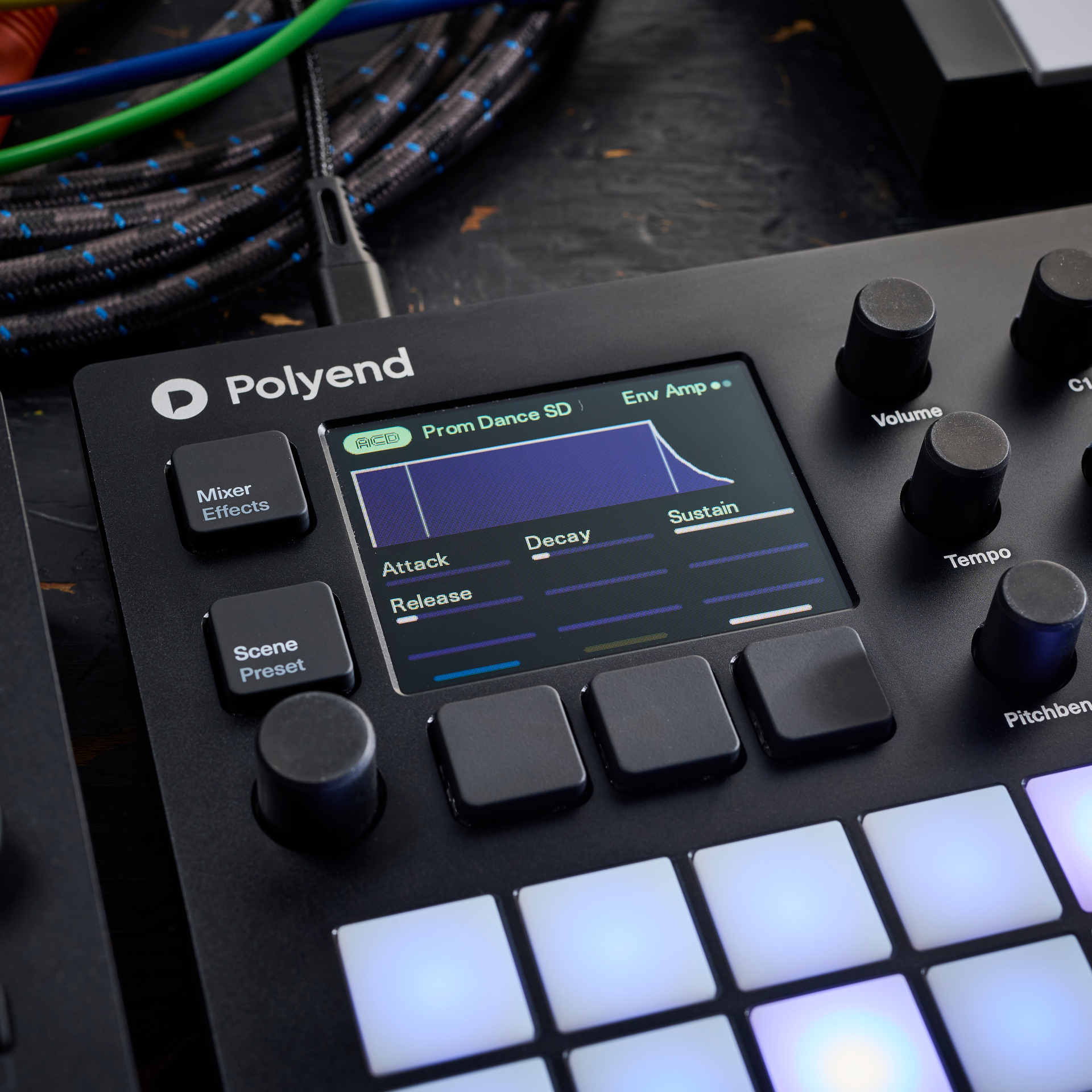
These are joined by four engines that are new for Synth. WAVS is a two-oscillator wavetable engine with an additional noise source and a ‘retro’ mode. It also has a Warp function that can alter the phase of each oscillator, working in both positive and negative directions.
PHZ is a phase distortion engine. This includes similar Character parameters to the WTFM engine but with the addition of increased modulation capabilities and a variety of options for the method used to modulate and distort the input waveform.
GRAIN is a granular synthesis engine. This has Burst and Cloud modes, altering the way grains are distributed, the former being more staccato, the latter creating more ambient textures. Unlike the engines mentioned above, each of which can be assigned up-to the maximum of Synth’s eight voices, GRAIN is fixed to a single voice – likely due to its strain on the internal CPU. It can, however, function in a paraphonic mode, whereby individual grains can be played at different pitches to create chords.
Similar constraints are placed on the final engine mode, PMD. This is a physical modelling engine that makes use of the open source code developed by Mutable Instruments for its Rings module. This offers control over both the exciter and resonator elements of the engine, allowing for bowing, blowing or struck characteristics and broad control over the type of resonance created. Again, likely due to CPU load, PMD has a maximum polyphony of two voices.
The three engines then feed into a global mixer section that also offers modulation, delay and reverb effect sends. Each effect type has a variety of character models to choose from, along with flexible parameter controls. The effect sends can also be routed to one another within the mixer.
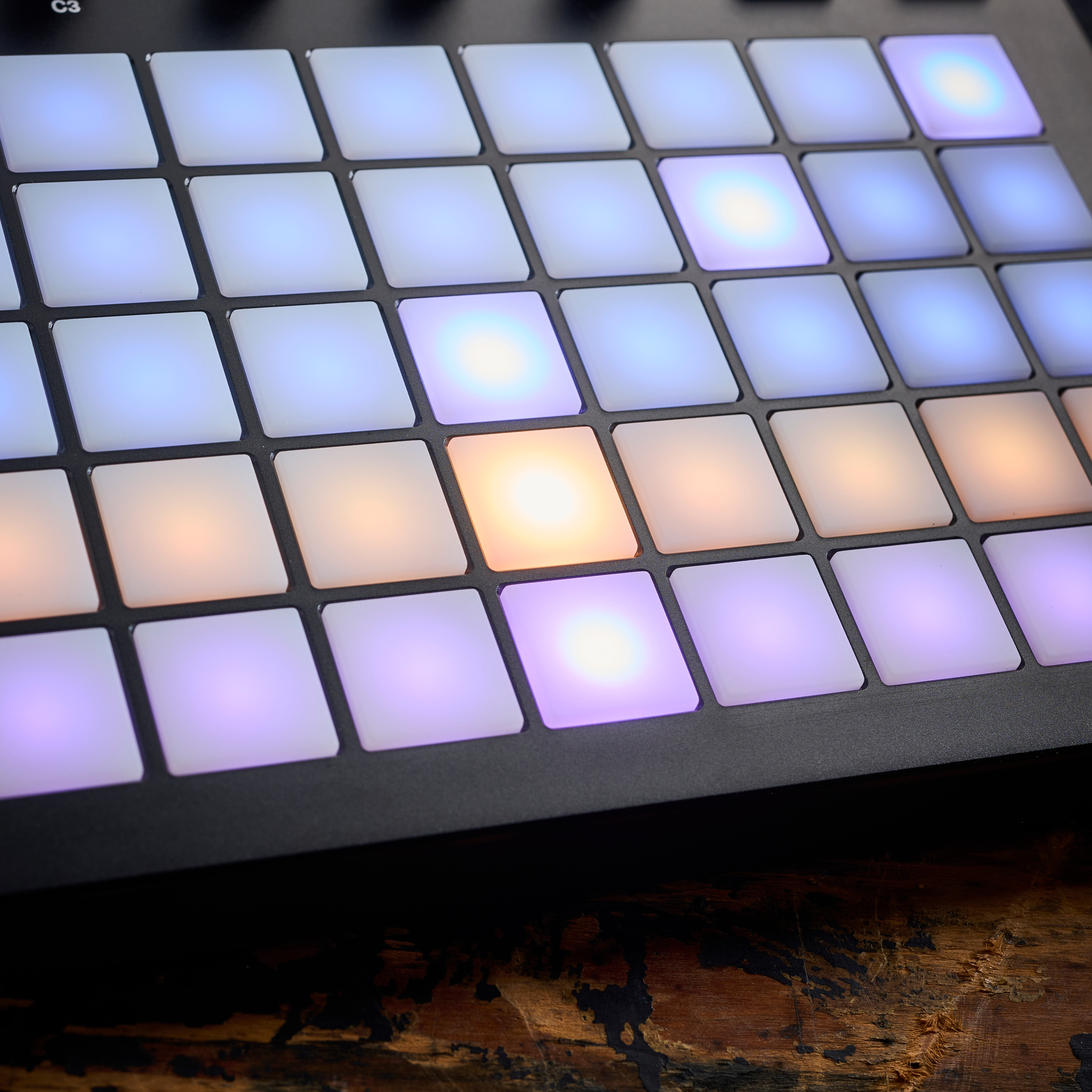
Polyend Synth: Performance and verdict
When we spoke to Polyend founder Piotr Raczyński ahead of Synth’s launch, he described the difference between Synth and its Tracker/Play siblings as lying in the fact that, whereas those previous grooveboxes are very sequencer-focused instruments, Synth is an instrument designed to be played and performed with.
The highlights of Polyend’s product line have often focused around innovative playing and sequencing designs – from its early hardware sequencer Seq through to the unusual approaches of both Tracker and Play – and Synth is another example of this. While its range of synthesis engines is impressive, it’s the manner in which the instrument allows the user to interact with these that’s most impressive.
Synth’s playing surface makes use of a 5x12 grid of pressure-sensitive pads. The general use of these will be familiar to users of devices like Ableton Push or Novation’s Launchpad range.
A playing space for each of Synth’s three engines can be laid out based on a variety of scale modes, in each case with a highlighted root note. All of which is fairly standard, although Synth develops the concept in some interesting ways.
For one thing, the instrument offers a variety of layout presets that dictate what ratio and position of the grid is dedicated to each synth engine. What’s more, Synth can be controlled using polyphonic aftertouch individually for each of its engines, which leads to a wonderful level of expressivity, particularly for playing drone sounds, expressive chords or pads.
As well as fixed scales, Synth can also make use of an innovative Chord functionality. This allows one of the three synths to trigger chords with each pad press, which can be set from a selection of pre-defined chord shapes or custom shapes loaded as Chord Packs. With one engine set to chord mode, the other two engines can be set to follow the chords being played, meaning that the playing grids will adapt to each new chord.
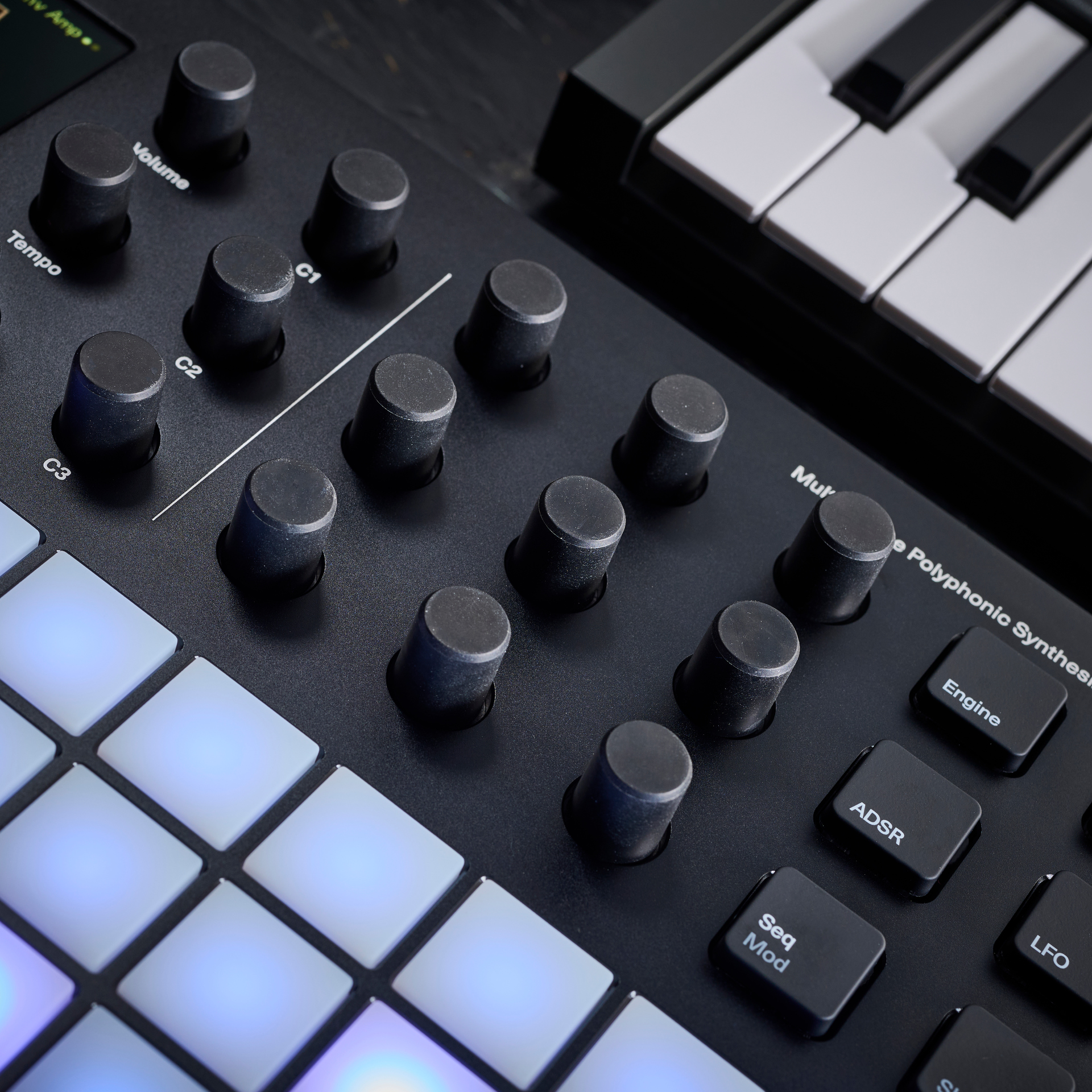
In practice, this means that it’s possible to, for example, hold a sustained bass note or simple pad using these follower engines, and have the pitch automatically follow the chord progression. Combined with the latch mode – engaged by pressing Shift while playing any pad – this makes it possible to ‘play’ three synth parts simultaneously whilst freeing a hand up to adjust synth parameters.
It’s worth noting too, that Synth can output MIDI via both its USB and MIDI ports, which allows it to function as a controller for up-to three synths simultaneously. Alternatively, it will also receive MIDI notes and CCs, should you prefer a more traditional keyboard playing experience.
"Simply an impressive example of smart, thoughtful instrument design."
While the emphasis on playing means that Synth is mostly a ‘live’ instrument, each of the synth engines can also make use of its own arpeggiator or simple sequencer. The arps are fairly flexible, with options to humanise and add swing to the patterns, along with a flexible range of arp styles and groove patterns.
The sequencer is much more simplistic than those found on Tracker or Play. Again, there’s an obvious influence from classic hardware like the SH-101 here. Each sequencer can record a pattern of up-to 64 notes and rests, although these share a single gate length control. This sequence can then be played back at different pitches by pressing any pad on the grid. Unlike Polyend’s groovebox instruments, there’s no way to automate synth parameters within these sequences.
Synth control
It’s also worth mentioning the smart way that Polyend has designed the various synth engines to be controlled from a unified interface. Each engine is controlled via Engine, Filter, ADSR, LFO and Sequencer tabs, with an additional mod matrix accessed via a shift press.
Depending on the engine selected, each of these tabs may have more than one menu to browse through, but these are laid out in a neat and fairly intuitive way that makes navigating the instrument pleasingly straightforward.
Parameters in each of these views are controlled using the 3x3 bank of touch sensitive rotaries. While fully shaping the synth engines can involve browsing through numerous tabs, the bright and clear screen makes it easy to keep track of what’s going on. Within the Engine tab for most instruments, this screen also offers a clear and very useful visual representation of the waveform being generated as you adjust different parameters.
Synth also allows for top-level control of each engine using a trio of macros. For most presets, the first two of these are mapped to alter the timbre of a sound and the movement/modulation, respectively. The third macro, in most cases, is labelled Experiment, and will push a sound into weirder or more atonal territory as increased.
The assignments of these macros can be fully customised in Synth’s menus though. In the same menu, it’s also possible to assign the routing of velocity and aftertouch for each synth patch.
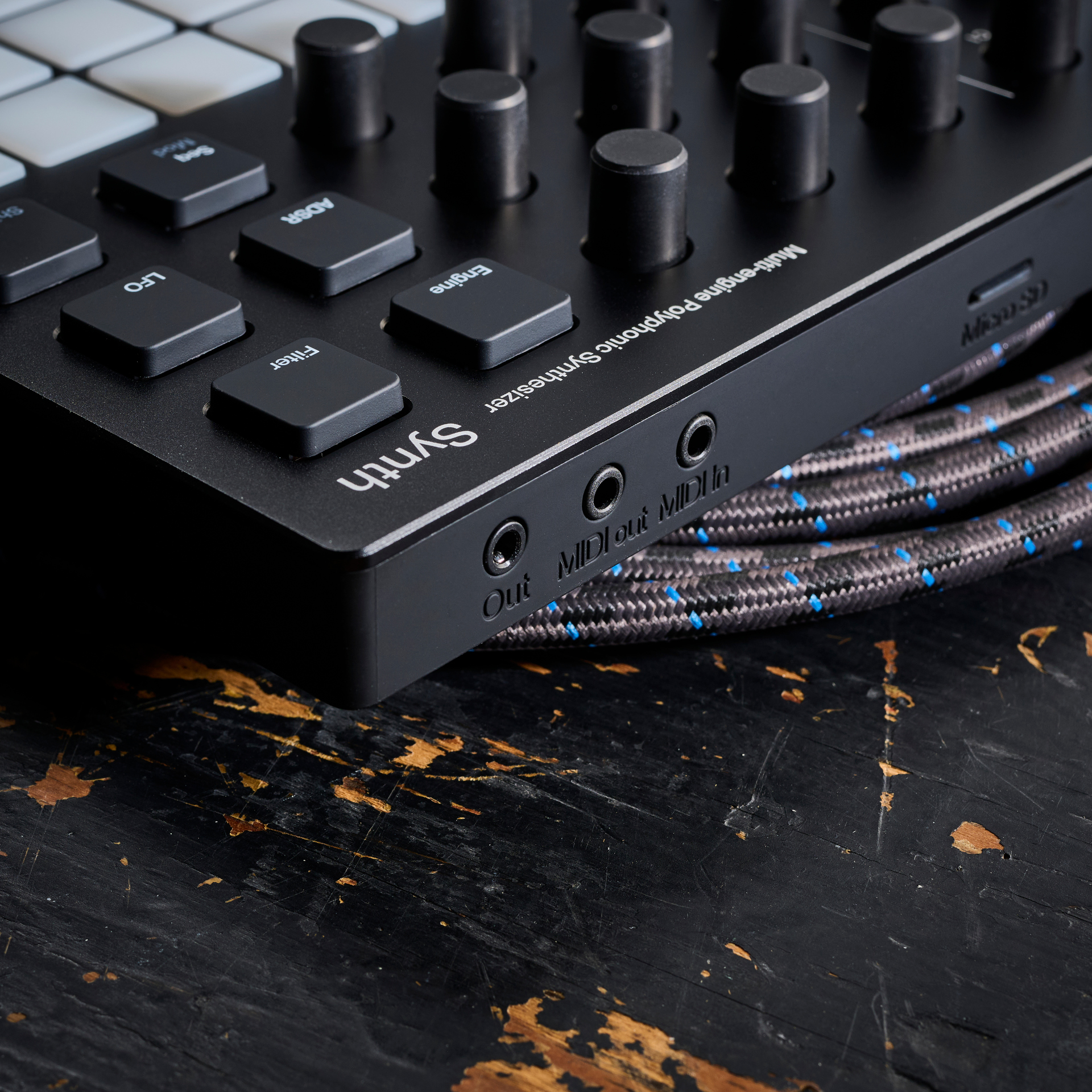
Sonics
Polyend has always excelled at interface and sequencer design, but it’s really upped its synth development game in recent years too. When the original Tracker dropped in 2020, its onboard wavetable and granular synths were a touch rudimentary, but this crop of engines is stellar across the board.
Synth is capable of a broad range of genuinely impressive sounds, from convincing recreations of vintage analogue patches to rich digital timbres. The inclusion of physical modelling, phase distortion and sample-based engines opens up some interesting combinations too, allowing synth to create percussive tones, evolving drones and real-world soundscapes alongside more traditional synth tones.
It’s also worth highlighting the impressive breadth and high-quality of preset patches included, which are testament to both Polyend’s internal sound designers and the impressive array of experimental artists the brand seems to attract.
There are some elements of the design that we’re less enamoured with. On the whole, the hardware itself is impressively compact, and we really like the fact it can be powered easily from a portable battery pack, or via USB at the same time as sending/receiving MIDI. Synth’s single stereo output feels a little stingy though – it’s a real shame that there’s no way to output the synth engines on individual channels. It would have been great to have the audio-over-USB capabilities found on Tracker Mini and Tracker+ to allow for this.
It can also be a little too easy to overload Synth’s CPU when making use of some of the more taxing engine types – particularly the physical modelling and granular generators. This can result in laggy response when adjusting synth parameters, or intermittent audio artefacts. This can be overcome by decreasing the voice count being used across the three engines, but it’s a shame to have to limit yourself in this way. Hopefully Polyend may be able to improve efficiency with future firmware updates.
These are minor drawbacks to what is an otherwise excellent instrument though. Polyend describes this as an instrument designed to be played – more so than its Play groovebox, ironically – and it really delivers on that front, thanks to the confluence of powerful synth engines and smart interface design.
It says a lot that upon unboxing Synth, we were immediately drawn into recording audio demos and capturing synth lines, even before we’d had a chance to read the manual. In all, this is simply an impressive example of smart, thoughtful instrument design, and a late contender for 2024’s best new synth.
MusicRadar verdict: Synth balances varied synthesis engines with smart, thoughtful interface design to create an inspiring, winning instrument.
Polyend Synth: Specifications
- Contact: Polyend
- Key features: 8-voice digital polysynth with three independent synth layers and eight synth engine types.
- I/O: USB C (power and MIDI), MIDI in, MIDI out, 3.5mm stereo jack out (includes 3.5mm stereo to dual mono 6.3mm adapter). Mini SD card port for sample, patch and firmware updates.
Polyend Synth: Hands-on demos
SpiralCasterPlaysPedals
I'm the Managing Editor of Music Technology at MusicRadar and former Editor-in-Chief of Future Music, Computer Music and Electronic Musician. I've been messing around with music tech in various forms for over two decades. I've also spent the last 10 years forgetting how to play guitar. Find me in the chillout room at raves complaining that it's past my bedtime.
